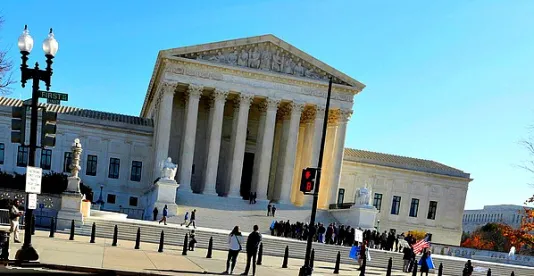For Supreme Court watchers and appellate practitioners, last week brought an interesting development – the Court is changing how it conducts oral argument. Arguments will now feature both unstructured questioning by all justices and then uninterrupted questioning by individual justices. It will be fascinating to watch how this new approach affects oral arguments in the Supreme Court, and whether it will trickle down to other federal and state appellate courts.
As highlighted at SCOTUSblog (here) and the Appellate Advocacy Blog (here and here), the new format first gives counsel two minutes of uninterrupted time, and then allows for free-for-all questioning by the justices for the remainder of counsel’s 30 minutes of argument. That is familiar practice; in a new twist, however, each justice in order of seniority then has the opportunity – after the 30 minutes of time has expired – to question counsel individually. No strict time limit applies to this new segment of oral argument, so it will be interesting to see how the Chief Justice will approach controlling the additional argument time. This new oral argument structure preserves an aspect of the Court’s practice during the telephonic arguments held during the pandemic. During telephonic arguments, questioning occurred in order of seniority and other justices would not interrupt to ask follow up questions.
Largely because of Justice Scalia’s outspoken style, oral argument at the Supreme Court over the past few decades has been a rough-and-tumble affair with justices often interrupting counsel. Not all justices favor this approach; Justice Thomas, for example, has expressed the view that frequent interruptions make oral argument less useful. Famously quiet during oral arguments pre-pandemic, Justice Thomas was far more active in questioning counsel during the more orderly telephonic arguments. It appears that, with the new oral argument structure, both justices and counsel will now have more opportunity to fully resolve questions that are on individual justices’ minds without interruption.
Oral arguments in the First Circuit and in the Law Court have been similar to arguments in the Supreme Court, with counsel often facing a “hot bench.” It remains to be seen whether the Supreme Court’s new approach to oral argument ends up affecting practice in other appellate courts. In my own view, it is less likely to change practice in federal appellate courts because argument before three-judge panels are less chaotic than those before the nine-member Supreme Court. But perhaps state supreme courts will watch to see whether the new Supreme Court practice is beneficial for larger appellate panels.
The new approach has the potential to improve oral arguments. At its worst, the free-for-all oral argument approach can prevent a true exchange between judges and counsel – whether because multiple justices are engaging in a proxy argument via questions asked to counsel, or because another question prevents counsel from answering a prior question. There are few things more frustrating to counsel, or less helpful to judges, than counsel being prevented from answering a judge’s question. Allowing uninterrupted questioning may address this issue. At the same time, robust oral argument questioning, with judges able to follow up on answers given to other judges, can at its best allow for full development of key issues. The Supreme Court is apparently trying to keep the best of the traditional oral argument format while addressing its shortcomings.
Oral argument should be designed to help judges fully explore and understand a party’s argument. We will wait and see whether the Supreme Court’s new approach furthers that goal.



 />i
/>i
